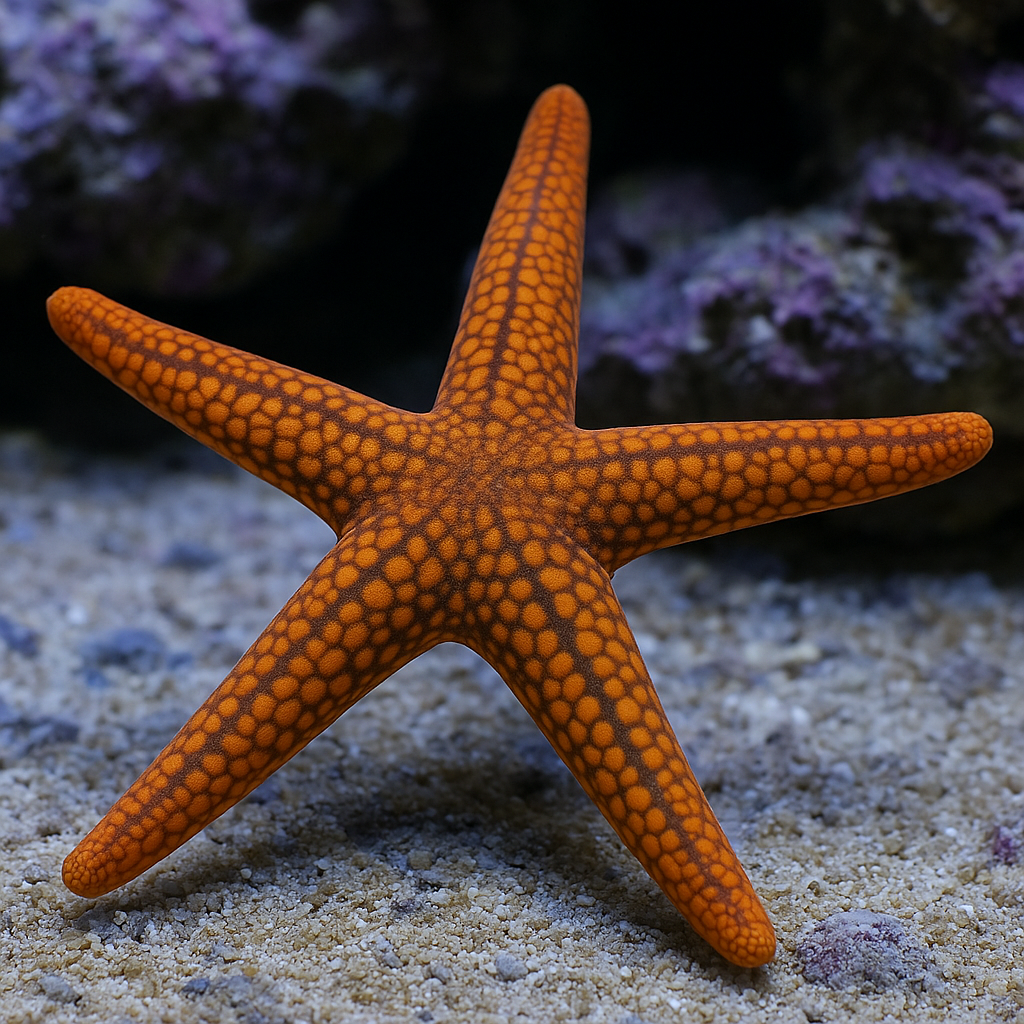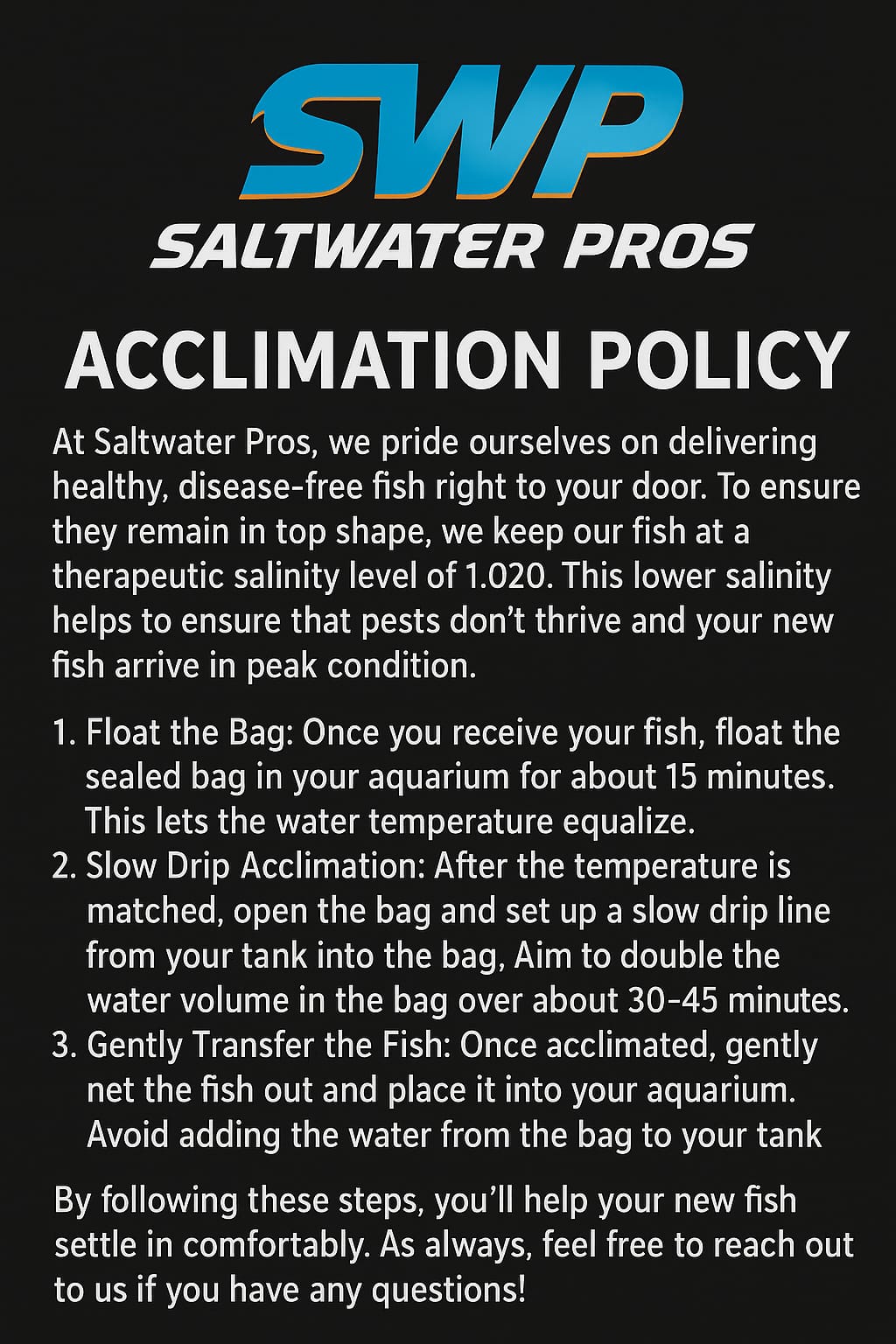Description
🔹 Overview
Nardoa novaecaledoniae is a striking sea star species from the Indo-Pacific, part of the family Ophidiasteridae. It is known for its unique coloration and intricate surface patterns, making it stand out from common aquarium starfish. While not as widely available as Linckia or Fromia stars, it’s a rare find for collectors.
🔹 Appearance
-
Body Shape: Classic 5-armed sea star with slender, tapering arms.
-
Size: Typically grows 6–10 inches (15–25 cm) across.
-
Coloration: Ranges from orange, tan, or reddish brown with darker reticulated (net-like) patterns or speckled designs along the arms.
-
Texture: Slightly rough surface with small raised tubercles.
🔹 Habitat & Behavior
-
Range: Found in the Indo-Pacific, especially around New Caledonia (hence the name), Fiji, and nearby reef systems.
-
Environment: Lives in coral reefs, rubble zones, and sandy bottoms.
-
Behavior: Slow-moving, grazes across rockwork and substrate in search of food.
-
Temperament: Peaceful, non-aggressive—compatible with reef fish, but with dietary considerations.
🔹 Diet
Like many Ophidiasteridae stars:
-
Primarily a detritivore and grazer, feeding on microalgae films, bacterial mats, and organic material on rock surfaces.
-
May occasionally graze on sponge and encrusting organisms.
-
In captivity: Often difficult to feed directly. Needs a mature, well-established tank with abundant live rock. Survival rates in new systems are low.
🔹 Aquarium Care
-
Tank Size: At least 100+ gallons with a large surface area and mature biofilm growth.
-
Parameters:
-
Temperature: 74–78°F (23–26°C)
-
Salinity: 1.024–1.026
-
pH: 8.1–8.4
-
Stable nitrate/phosphate (very sensitive to swings)
-
-
Acclimation: Extremely sensitive to salinity and oxygen changes → always use long drip acclimation.
-
Compatibility: Safe with reef fish and most invertebrates. Generally considered reef-safe, but must have enough food sources.
-
Challenge: Starvation is the biggest risk. Only suited for advanced aquarists with mature tanks.









